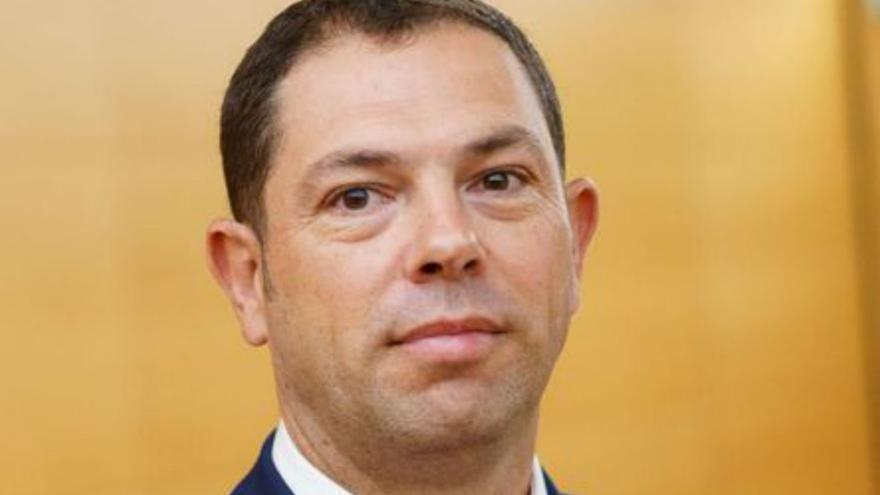
Rescues in mountains of Tenerife they exceeded the pre-pandemic figures during 2022. The firefighters of the Consortium carried out 152 interventions in the natural spaces of the Island last year compared to 103 in 2019, the last reference before Covid-19. This figure represents 47.8% more. 2020 registered a great decrease in performances, just 70, due to confinement. Already in 2021 with the beginning of the end of the restrictions they rebounded to reach 150.
The annual balance of Cecoes 112, released a few days ago, calculates the incidents of rescue, salvage and search for people in 326 for the entire Canary Islands with a growth of 22% compared to the previous year. In Tenerife almost half of the total occurred.
The Councilor for the Natural Environment and Safety of the Tenerife Council, Isabel García, understands that “possible risks must be reduced with a well-signposted network of trails free of dangerous points.” Hence, she considers the TenerifeOn tool, the virtual guide of 173 trails, recently activated and operational, “important and very useful” for safety in mountain settings. The application has been very successful as evidenced by more than 10,000 visits in a week.
The island councilor recalls that most of the rescues take place in four areas: the Parque Nacional del Teide, Anaga, Teno and, to a lesser extent last year, Masca. The most repeated in accidents are the less serious falls. García attributes this type of recurring situation to ignorance. From ignorance of the route to not knowing if you are traveling through a protected natural space, a reserve or a Rural Park
The person in charge of the area emphasizes the help that the new virtual resource can provide so that «the visitors who are concentrated in these very crowded areas disperse to other areas of the island territory. This would reduce incidents.” A way to alleviate the number of rescues that occur in the mountains and other natural areas of Tenerife.
The most recent case occurred on the 7th. Eight people had to be rescued from inside their vehicles in the Teide National Park after the last snowfall as they were unable to circulate due to the presence of ice sheets. In addition, they were without warm clothes.
“The ransom should be charged to all these people who go up with unprepared cars and in very adverse conditions.” It is the usual comment of those who receive this type of news.
But it is not always possible to charge fees linked to the negligence and the type of activity, risky or not, that is carried out. The insular director of Security of the Cabildo, Rubén Fernández, explains it. The income capacity of the natural person who could be exempt also influences. There will always be a sanction in case of not complying with the alerts or the prohibitions of access to trails and tracks.
official rates
The Official Gazette of the Province of March 8, 2015 publishes the current rates for the actions of the Tenerife Fire Consortium. There are three large blocks. In the first place, that of the troops divided into eight categories. Prices per hour range from 51 euros for an officer to 27 in the case of firefighters. As for the vehicles, they depend on the necessary ones. The pumpers, light or heavy, come to 125 euros per hour. Cost of supply water –3,016 euros per cubic meter– apart. And each kilometer to and from the park is priced at 1.15 euros. The final cost of the joke will depend on the type of accident, the natural space and the necessary means
The 112 usually activates the Consortium. Fernández assesses: «We have our own technician in the coordination center, something that does not occur, for example, in Gran Canaria. It’s a positive thing.” He clarifies that “the Consortium does not intervene in all rescues, although it does in the vast majority.” He values that “after the pandemic there was an exponential increase in the use of natural spaces, not only for hiking but for trekking or other activities.” He points out that in federated sports there are not too many incidents. The profile of hikers in our mountains is very broad: young people. seniors, foreigners, nationals… It depends on the natural space. Anaga, for example, is more traveled by the people of the country and the Teide National Park by all.
The recommendations, the island director points out, are to wear adequate clothing and supplies and that a family member or friend know the route to follow because “there are areas where there is no coverage.” Also that they know “the approximate time it can take.”
Regarding the material, Rubén Fernández considers it “usual that, especially people from abroad, do not have special tennis shoes or a coat if they go up Mount Teide.” The main incidents “are small falls.” It is worth noting the example of Masca where the accident rate has been greatly reduced by restricting access or closing the ravine when there is an announcement of adverse weather.














